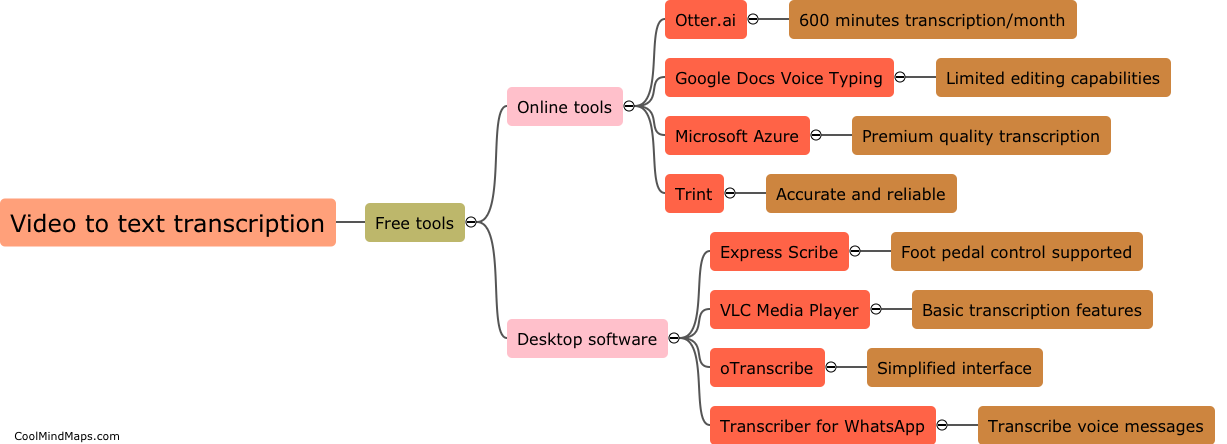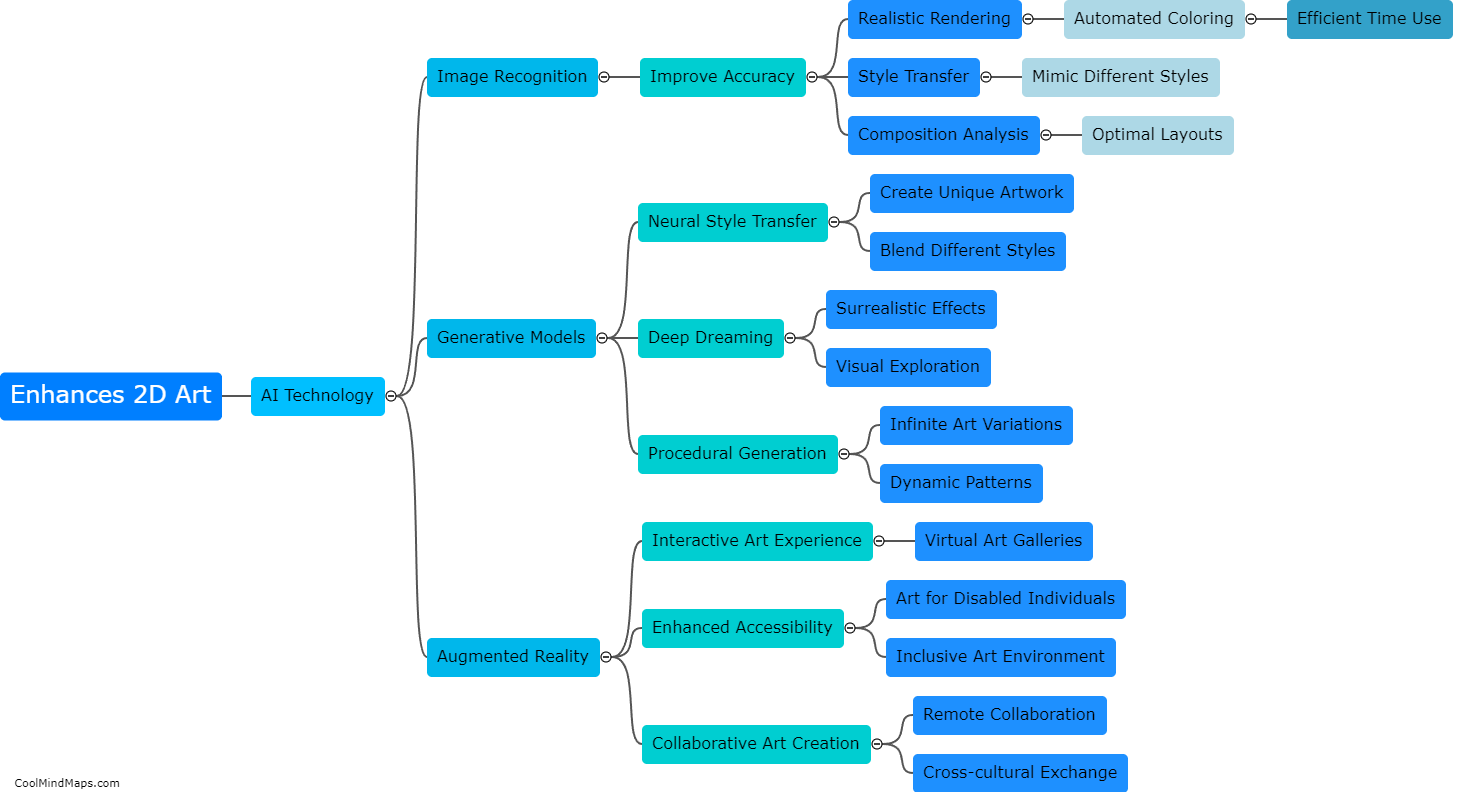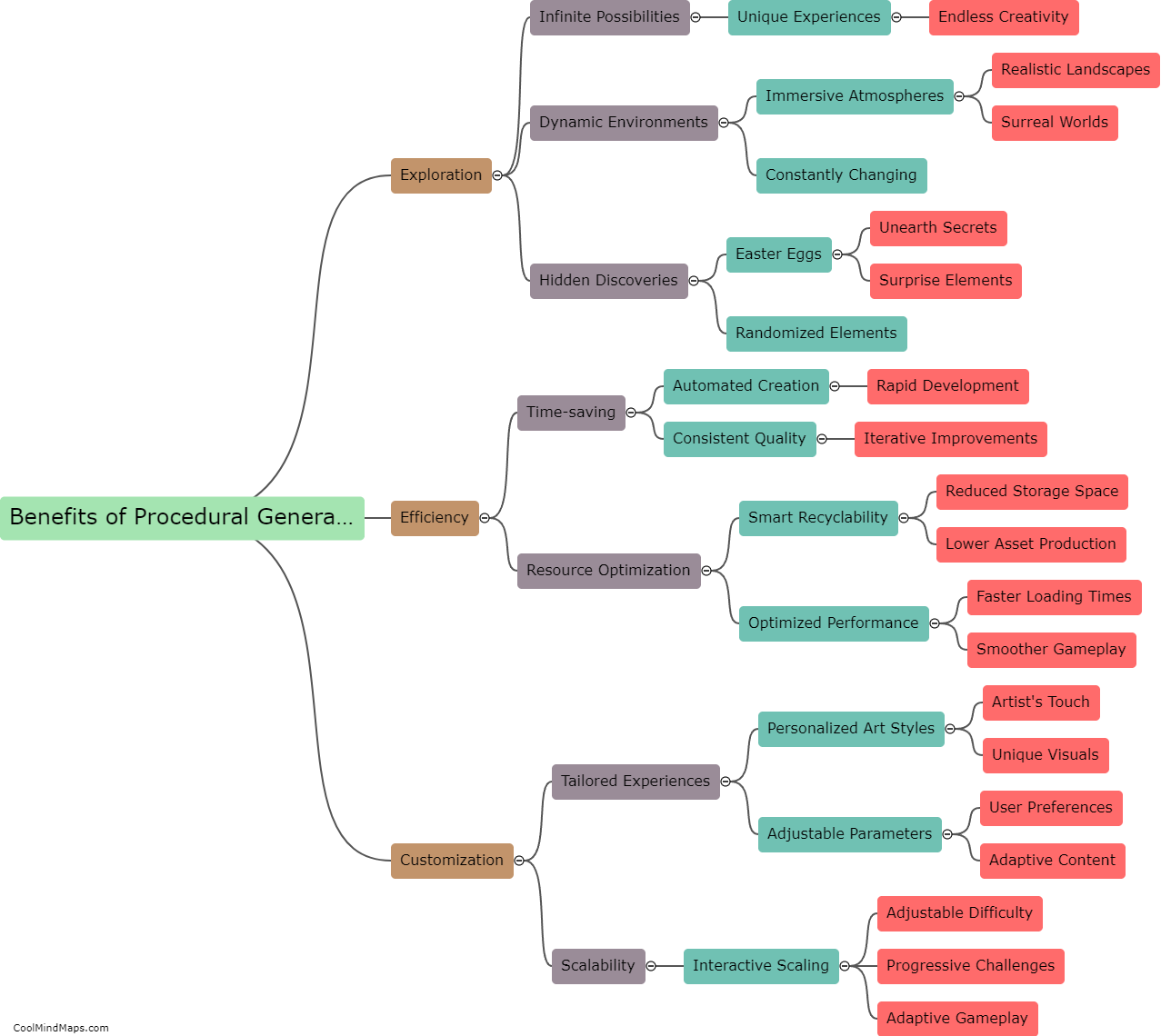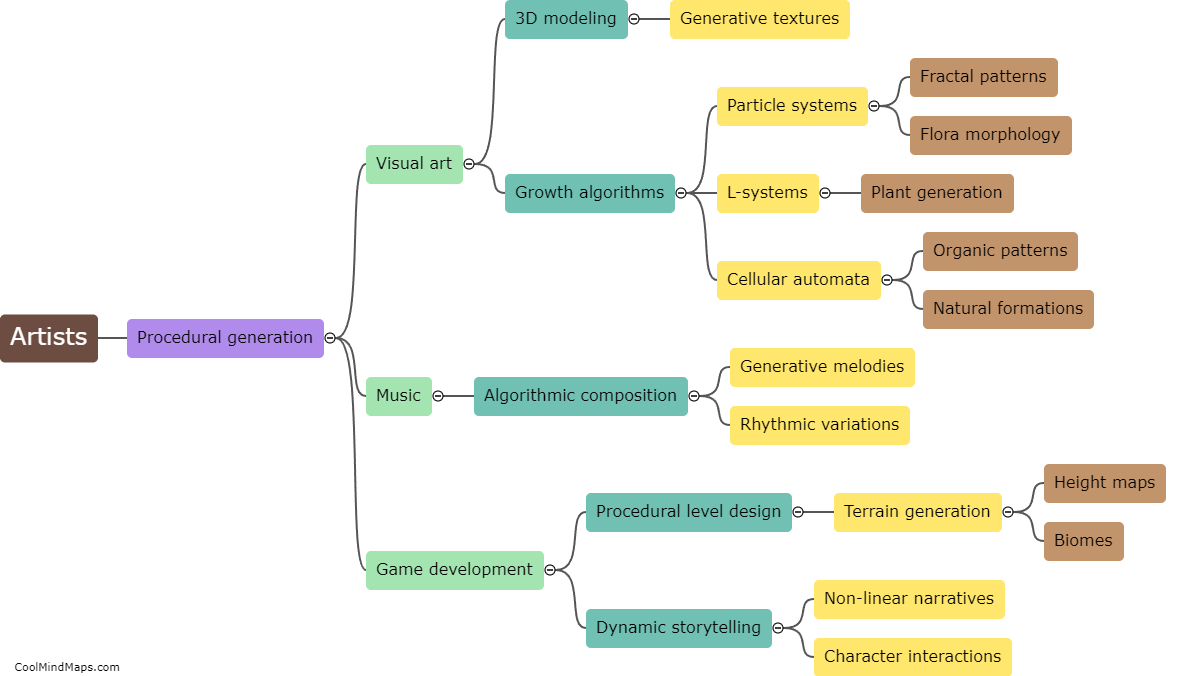What are some examples of procedural generation techniques in art?
Procedural generation techniques have revolutionized the field of art by allowing artists to create complex and dynamic artworks through algorithms and rules. One of the prominent examples of procedural generation in art is the creation of fractals. These intricate and self-repeating patterns are generated based on a set of mathematical equations, resulting in mesmerizing and detailed artworks. Another technique is called L-systems, which are used to generate natural and organic shapes like plants and trees. By iteratively applying simple rules, artists can create endless variations of these creatures. Additionally, artists use noise functions like Perlin and Simplex noise to generate realistic textures, landscapes, and terrains. These techniques enable artists to explore vast creative possibilities and offer unique ways to approach artistic expression.
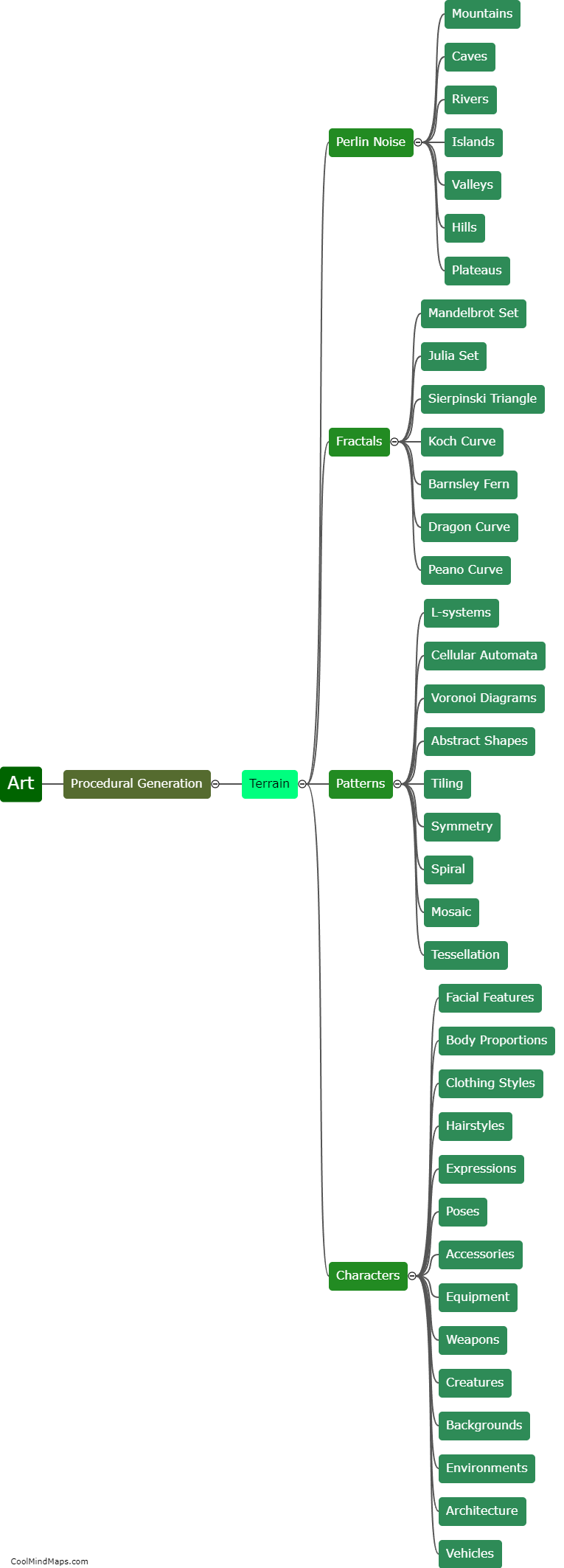
This mind map was published on 31 August 2023 and has been viewed 105 times.
